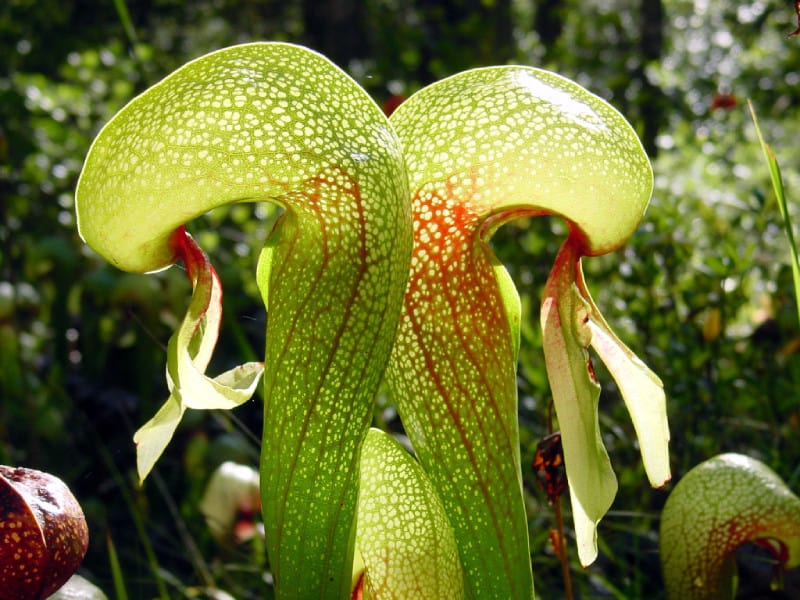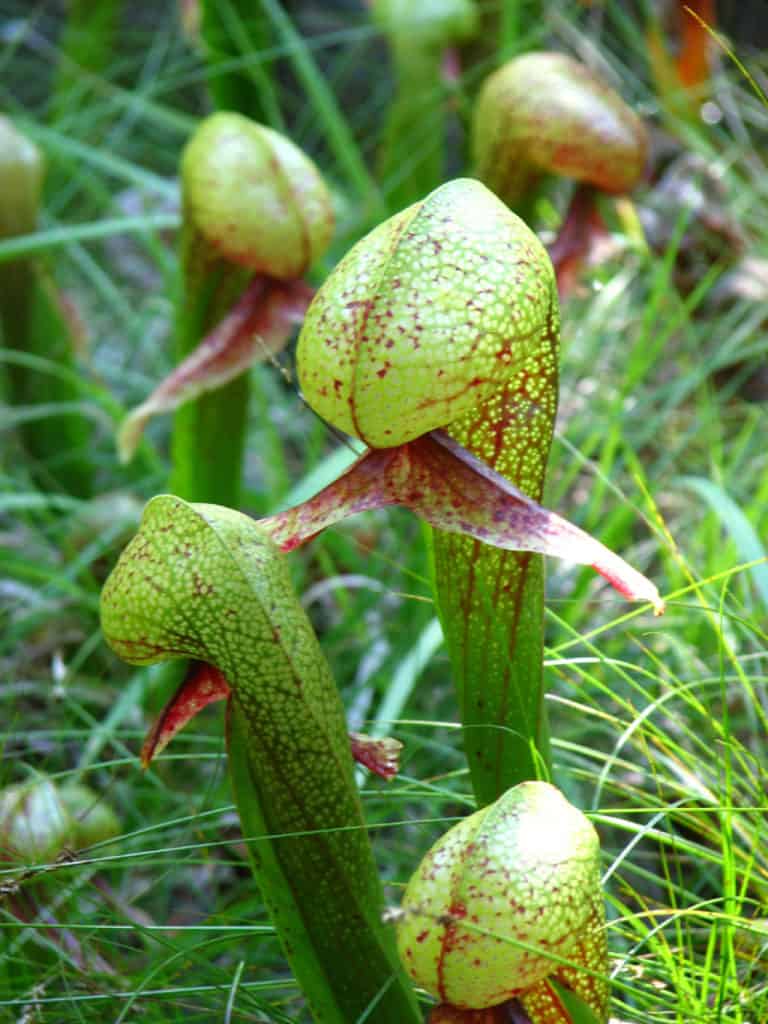
Photographer: NoahElhardt
CC License: http://bit.ly/2IjEG4n
Cobra Lily Facts
- Quite clearly, the highly descriptive term for the Cobra Lily perfectly serves as the image-creating common name of a fascinating plant. In fact, the name represents the term very often used for a rather unique variety of carnivorous plant.
- Following that, and truly unfortunately, it remains considered extremely uncommon in the wild. It also appears to have a highly limited, and also quite specific habitat range. The IUCN nevertheless presently lists it as a species of Least Concern on its Red List.
- Understandably, the common name of the visually distinctive species derives from its unique physical appearance. That holds true due to the fact that the leaves of the plant generally bear a strong resemblance to a cobra preparing to strike.
- Somewhat mysteriously, the precise method of pollination of this species in the wild still remains completely unknown to researchers. That’s because, surprisingly, there has yet to be a formally organized study of this facet of the remarkable species.
- Presently, the IUCN does not consider the Cobra Lily to be threatened at this time. That status could, however, change in the near future. Much as countless other species around the world, it now faces the growing threat posed by climate change.
Related Articles
Sundew Nepenthes pervillei Butterwort
Photographer: David Berry
CC License: http://bit.ly/2xQPH8p
Cobra Lily Physical Description
Regardless of its fascinating appearance, the rather astonishing Cobra Lily ranks as a moderate-sized variety of carnivorous plant. That’s because specimens sometimes attain a height of about 33 in (85 cm). Most individuals, however, usually remain smaller.
Each individual member of the species additionally produces several hollow leaves, with no stalks. As these develop, they typically grow to the same approximate length as the single flower. This unique feature, in turn, the plant produces atop a relatively thick stalk.
The leaves of the plant themselves, furthermore, most commonly develop as a somewhat light green in color. But, these also appear streaked with numerous blood-red vein-like features. These only serve to further add to the eerie appearance of the Cobra Lily.
The remarkable leaves also generally display a dark, purplish-red appendage at the tip. Many people consider this part of the plant to resemble the forked tongue of a snake, thus the common name. All these only further enhance the resemblance to its namesake.
- Kingdom: Plantae
- Phylum: Angiosperms
- Class: Eudicots
- Order: Ericales
- Family: Sarraceniaceae
- Genus: Darlingtonia
- Species: D. californica
Photographer: Aaron Carlson
CC License: http://bit.ly/2xLZ0ap
Cobra Lily Distribution, Habitat, and Ecology
Sadly, the extremely amazing Cobra Lily possesses an extremely limited range of habitation. That’s because this wonder of Nature only grows in a small portion of the globe. That’s the wild areas in portions of California and Oregon, in the United States, in North America.
Even more specific, however, remains the unique habitat requirement of the astonishing carnivorous species. That holds true due to the natue of its environment. In fact, it only grows in seeps and bogs with cold running water and highly nutrient-poor soils.
As with its many related species, furthermore, the Cobra Lily also augments its limited ability to draw nourishment from the soil. This the amazing product of evolution accomplishes by gaining nourishment from insects it succeeds in trapping and digesting.
Its uniqueness, though, presents itself in yet another way. That’s because this species differs from all other pitcher plants in the Americas in one relatively important respect. That’s due to the fact that it does not trap rainwater in its pitcher. Instead, it draws it from the roots.
Species Sharing Its Range
Cecropia Moth Trogloraptor Nevin’s Barberry
Check out our other articles on Boiling Lake, Elephant Foot Yam, Goliath Beetle, Scottish Wildcat, Mono Lake, Spanish Shawl, Bald Uakari, Basking Shark, Green Anaconda, Poinsettia

